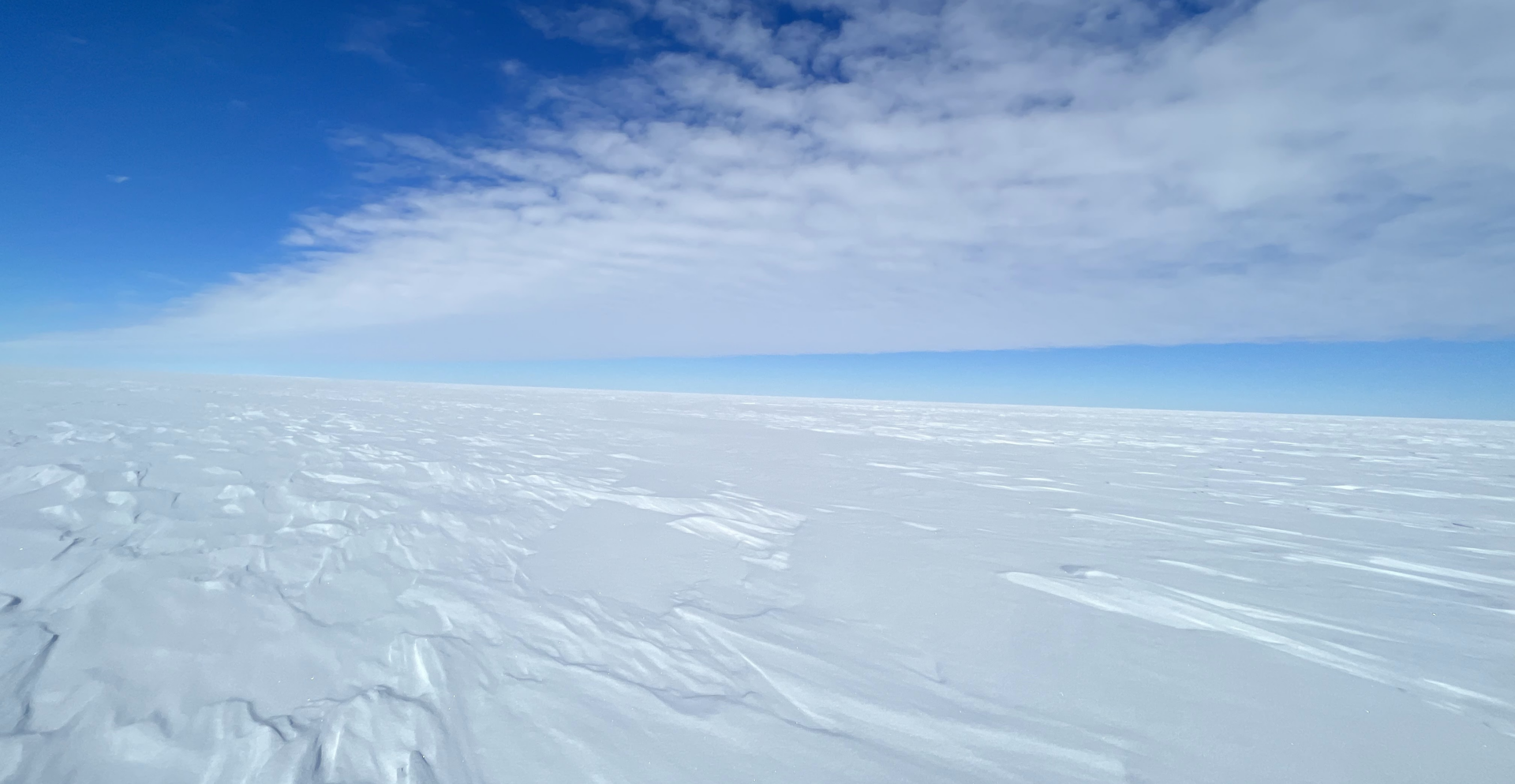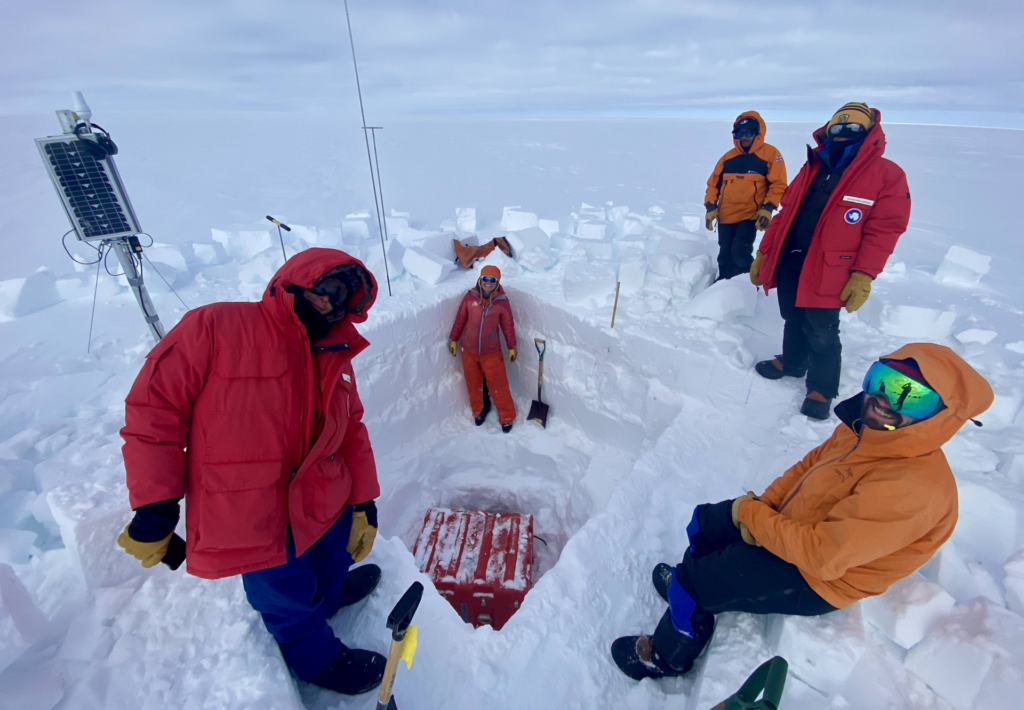Antarctic Seismology: Analysis of novel 3-D seismic data from the shear margin of Antarctica’s Thwaites Glacier

In this PhD, you will interpret a groundbreaking seismic reflection dataset acquired over a fast-flow Antarctic glacier. This dataset is the first 3-D active seismic acquisition to take place on an Antarctic glacier, using nodal technologies to apply reflection imaging methods.
Seismic reflection methods have great potential for understanding glacier systems, and a range of seismic properties have been linked to fundamental characteristics of ice masses. Anisotropic variations in seismic velocity are related to changes in the crystal structure of ice, and thus inform preferential flow directions. Seismic reflectivity at the glacier bed can diagnose the material characteristics of the subglacial environment, and thus predict whether a glacier is frozen to its bed. When this full suite of seismic observations is combined, there is a powerful ability to describe the physical state of the glacier system.
In joining the Panorama DTP, you will work with seismic reflection data acquired on the shear margins of Antarctica’s Thwaites Glacier, a survey conducted in winter 2023/4 as part of the ITGC’s TIME project on the West Antarctic Ice Sheet (WAIS). The WAIS is a contiguous ice mass but features fast-flowing glaciers (‘ice streams’) within it that are typically marine terminating. The transition from slow- to fast-flowing ice happens across a zone referred to as the ‘shear margin’. The controlling factors that govern the location, extent and stability of shear margins are poorly understood – and in the case of Thwaites Glacier, a major outlet of the WAIS, they are critical for predicting sea-level rise. If the shear margins of Thwaites Glacier were to migrate under warming climate conditions, this could initiate the collapse of the WAIS.

A unique aspect of this 3-D dataset is that it uses wireless nodal technology, a major advance in Antarctic science; equivalent cabled systems would be logistically difficult to deploy. In working with 3-D seismic methods over the Thwaites Glacier shear margin, you will use data that are glaciologically significant and represent a major technical milestone in Antarctic seismic technology.
Your goal in this PhD is therefore to interpret seismic reflection data at the Thwaites Glacier shear margin, including (but not limited to):
– building 3-D reflection sections of base-ice topography
– characterising base-ice reflectivity to quantify variations in subglacial material properties, and
– exploring for azimuthal variations in seismic velocity that could relate to crystal orientation and a preferential flow direction.
Additional technical approaches that you could consider include: intelligent interpolation of data, to refine the spatial sampling interval of the 3-D volume, evaluation and correction of seismic quality factor, and full-waveform inversion to improve the resolution of anisotropic velocity models. There could also be some potential to explore the scope of shear-wave splitting analyses depending on data quality. You will work with the wider TIME project to interpret your observations alongside records of passive seismicity and incorporate observations into predictive ice-flow models. With such a large project team, there is significant opportunity for you to contribute to collaborative publications, in addition to leading your own papers on technical geophysical development and glaciological inference.
Whichever direction you choose to take the project take, you will be supported by an expert advisory team including staff from Leeds’ School of Earth and Environment (SEE) and the wider TIME project. You will have access to SEE’s sector-leading stock of geophysical processing software, and benefit from networking and training opportunities facilitated by the PANORAMA DTP, SEE’s research institutes and cross-faculty identities including water@leeds.
